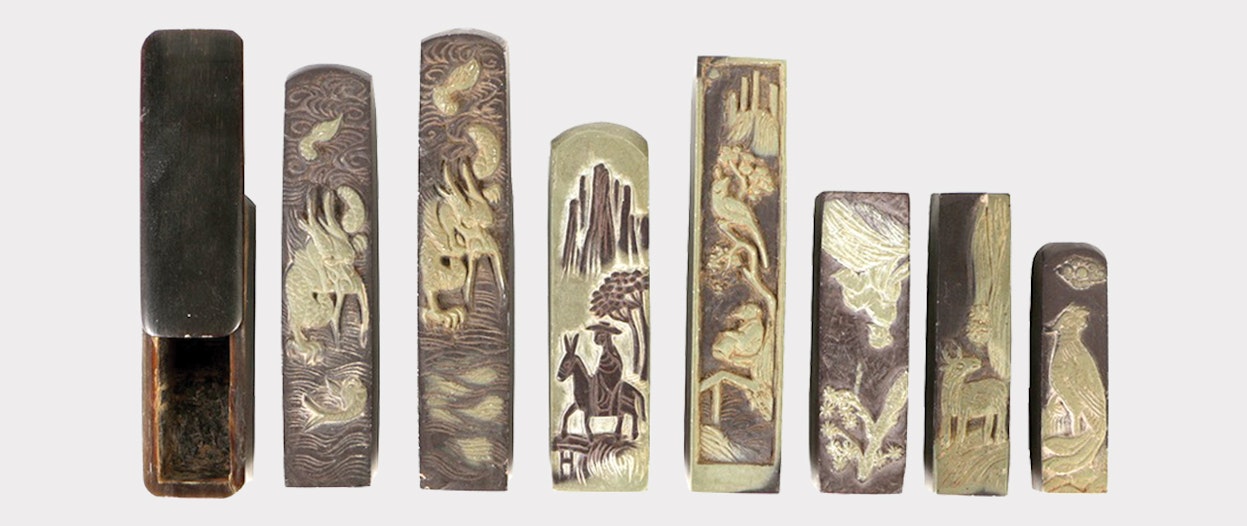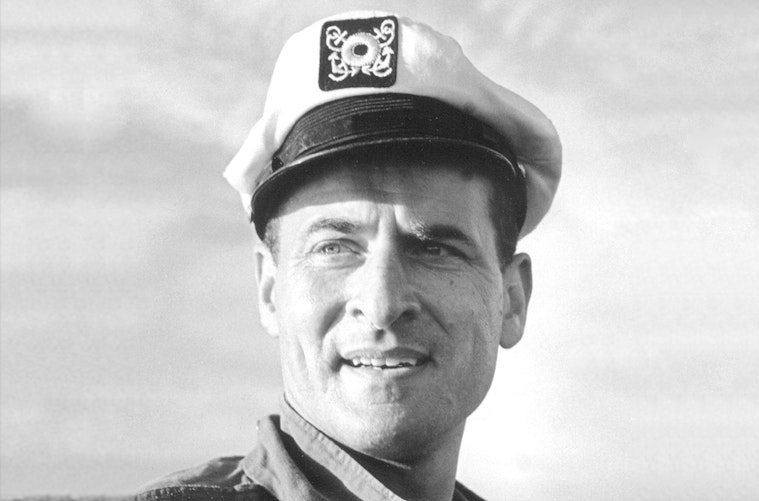Seller Story: Dr. Henry Heimlich, Cincinnati, OH
Decades before he would introduce the world to the Heimlich Maneuver, the lifesaving technique responsible for saving countless lives, Dr. Henry Heimlich arrived at Camp Four in Inner Mongolia, China on June 4th, 1945, in the midst of World War II. A doctor in the U.S. Navy, he had volunteered to be part of a clandestine mission that was part of SACO, a private treaty between the United States and forces in China resistant to the Japanese occupation. He spent the next several months in the camp, tending to patients and training soldiers in basic medical practice. The mission was a tenuous and dangerous one, in close proximity to the Japanese occupation and adverse Chinese forces. Dr. Heimlich oversaw the treatment of numerous soldiers, villagers and outsiders at the camp, which is likely when he received many of these items from patients and dignitaries.
The late Dr. Heimlich’s autobiography, Heimlich’s Maneuvers, provides a riveting account of his work in Inner Mongolia. Camp Four was one of the more remote stations where the Americans were operating, and Dr. Heimlich was at a distinct medical disadvantage: “I saw illnesses that were far more advanced than they ever would have progressed and an array of ailments that had been virtually eliminated back home,” he recalls.
Many of the remarkable works in this sale were gifted during or acquired by Dr. Heimlich during this appointment and station near the Gobi Desert. The collection of SIno-Tibetan bronzes is emblematic of that regional iconography, as is the dragon robe. “I remember when I was little, carefully lifting the glass off of our coffee table that held these small treasures, and imagining the people who had given these things to my father as gifts,” says his daughter, Janet. “My understanding is that they were tokens of appreciation given by people whom he had medically treated. When I think about my father The Humanitarian, I don’t only think about his medical innovations, I also think about how he felt personally connected to so many individuals who owed their lives to his work.”


Collection of Chinese Soapstone Seals

Impressive Chinese Dragon Court Robe Gifted to Dr. Henry Heimlich

Group of World War II Era Chinese Currency Including Forty-nine 1936 Central Bank of China Ten Yuan Notes

Tibetan Bronze of Three-Headed, Six-Armed Seated Bodhisattva

Indian Incised and Patinated Tray

Chinese Stone Carved Buddha Fragment

Collection of Chinese Archaic Style Cast Metal Censer

Mid-Century Chinese Carved Bamboo Cricket Cage


Vases Featuring Etched Brass and Cloisonné

Chinese Watercolor by Ding Xiu Ge

Finely Cast Sino-Tibetan Gautama Buddha Gilt Bronze

Vintage Silk Cheongsam Dresses

19th Century Bodhisattva Bust on Wooden Pedestal

Hand Blown Art Glass Vase

Eureka Mfg. Co. Inc. Wooden Jewelry Box

Fine Chinese Carved Toggle

Sino-Tibetan Bronze Buddha Statue

Water Stones Agate Vase by Elyse Sens

Group of World War II Era Chinese Currency Including a 1930 Central Bank of China 50 Customs Gold Units Note

Industrial Style Two-Drawer Work Table

Collection of Asian and Other Metalwork

Chinese Silk Robe

19th Century Chinese Bamboo Scholar Carving

Chinese Pewter Cast Mirror

Pair of Chapman Octagonal Brass Lamps 1970s

Chinese Phoenix Reticulated Plaque

19th Century Bronze of a Tibetan Lama

Vintage Display Case Coffee Table

Seated Sino-Tibetan Amitābha Buddha Bronze

Hon Company Sled Base Chair

Maryjo Koch Mixed Media "Common Gull"

Pair of Chinese Rosewood Carvings of Shouxing the God of Longevity

Fine Chinese Rosewood Carving of a Scholar-Official

Russian Icon on Panel of the Decollation of St. John the Baptist

Bradington Young Leather Reclining Wing Chair

Hand Knotted Heriz Serapi Area Rug

Nickel Plate Chocolate Pot

Group of World War II Era Chinese Currency Including Fifteen 1936 Central Bank of China One Yuan Notes

Vintage Table Lamp

Vintage Widdicomb Eight-Drawer Dresser

Clay Pipe Bowl Display With Pipes

Taiwanese Wood and Brass Anchor Bookends

1955 Alva Studio Statue After Michelangelo Buonarroti's Moses

Southwest Inspired Carved Wood Candle Holders

Vintage Chinese Dress and Shoes

Chinese 19th Century Bronze Monk Figure

Early Greek Icon of the Life-Giving Wellspring

Tibetan Gilt Bronze Statue of the Green Tārā

Circa 1897 Thomas Hayes Sterling Silver Trinket Box

Ceramic Table Lamp

Kimball International Office Chair

Cartier Inc. Sterling Silver Dish

“He had an ability to relate to patients in a truly compassionate way,” says Janet. “A few times, I had the privilege to see Dad interact with patients and I was always struck by how warm he was with them. For example, Dad made unwavering eye contact. Sometimes, he’d pull over a chair over and sit down next to their bed so he didn’t have to look down on them. In the 1950’s, Dad was the first American to perform a complicated surgery that involved replacing the esophagus using the lining of the stomach. It allowed patients who hadn’t eaten solid foods for years to be able to swallow again. Dad was also the first physician to perform this operation on an infant, a baby named Guy Carpico. Dad was so concerned about the baby’s survival, he sometimes slept in the tiny patient’s hospital room. Before Guy’s first birthday, he could eat normally. Several years later, he wrote the forward to Dad’s memoir, Heimlich’s Maneuvers.”







